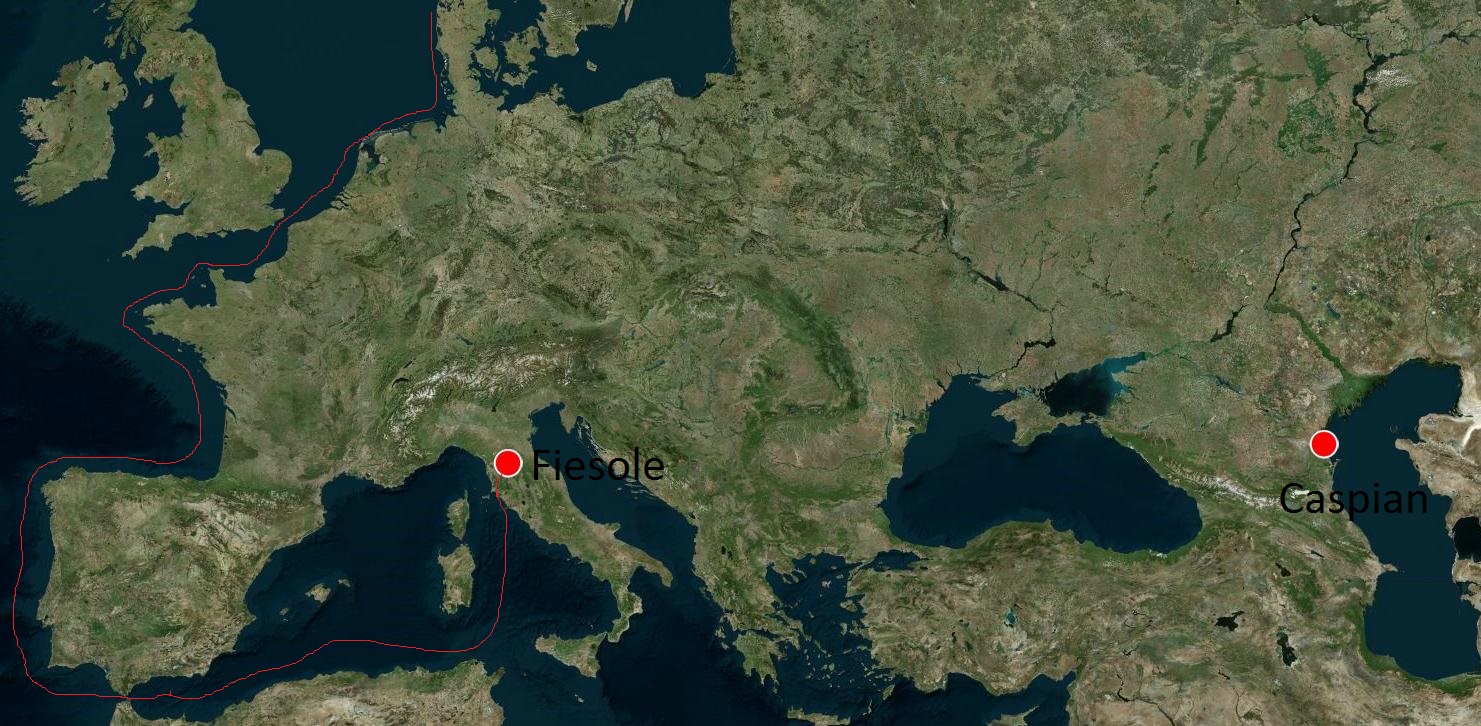The Furthest Viking Raid June 21, 2016
Author: Beach Combing | in : Medieval , trackback
From the very late eighth century Scandinavians left their homelands to raid. These raiders were called vikings and historians usually capitalize the word to give us the Vikings: pagan crusaders out for money, slaves, blood and saga-glory. They began with what was close at hand, the northern islands (Shetland, Orkney etc), then they moved onto Britain and the coasts of continental north-western Europe. Then, they went further afield, raiding down as far as Arabic Iberia and beyond. Beach’s question is a simple one: what is the furthest the vikingr got on their raids?
There are three general directions that the dragon ships took: west, east and south.
West: Beach is not including westward adventures into North America, because it is difficult to interpret Viking wars with the natives there as ‘raids’. The Vikings seem to have had relatively little interest in native culture and native possessions and, in the end, they were the ones who were ‘Vikinged’ back to Greenland.
East: This is more interesting. The Rus, in eastern Europe, sailed down the Volga into the Caspian Sea, from the mid ninth to the mid tenth century, and raided there attacking what are today Azerbaijan and Iran. In 943 they memorably captured Barda, an extraordinary achievement for – Scandinavian readers will forgive Beach – some hicks from the Arctic circle.
South: It is well known that the Vikings caused havoc on the northern coasts of Spain, particularly in Galicia. But in the later ninth century they also raided further down the coast of what is today Portugal, then in Arab hands, and into Andalusia. They crossed and raided the coast of Arab Africa and then passed into the Mediterranean. The question is, how far did they go?
There is one well recorded raid in 860 by Björn Ironside deep into the Mediterranean. Björn took his men to Pisa on the western central coast of Italy and then raided Fiesole, just above Florence. There is a case to be made that the raid on Fiesole was the furthest the Vikings ever got and the raid unquestionably happened. It is recorded in Italian and Scandinavian sources.
First, in brute terms of how many miles, it is further to sail to western Italy from Sweden, than it is to the Caspian, which is just across the Baltic and then down a bit. Second, the raids on the Caspian were, in any case, run by the Rus Norse, who were based in nearby Eastern Europe. To modern ears the idea of Vikings storming the shores of Caspian Iran is much more dramatic than supping on Chianti and butchering Tuscans, but in terms of nautical miles covered the attack on Italy has more to recommend it. So complimenti to Björn in Valhalla, the greatest Viking psycho of them all.
Other views on the longest raid: drbeachcombing At yahoo DOT com
Stephen D. 30 Jun 2016, ‘I’ve not read Ann Christy’s “Vikings in the South”, but to judge from the maps that be seen on the Amazon page she considers it possible that some Mediterranean Vikings did get as far as Constantinople. If you buy it, please let me know. And do you count Sigurd Jorsalfar (the Jerusalem-farer) who in 1107-10 led a Norwegian crusade that got at least as far as the River Jordan?’ I [Beach] wouldn’t count a crusade, and I suspect that Constantinople was Vikings entering the imperial guard. Bruce T weighs in, 30 Jun 2016, ‘Odd that you put that post up. I was reading an article on early dirhams in Scandinavia and the British Isles just last night. The Viking raids on the Amalfi coast were mentioned as a possible source for Scandinavia as Muslim pirates held some ports and small chunks of the hinterland there in that period. There was also some speculation about the origins of the dirhams that Offa’s mint used as models. France and Northern Spain seem logical as Offa was a couple of generations before the Vikings turned up. Now to the topic at hand. To me it’s the Volga raids into the Caspian, hands down. They were continuous and had much more impact, connecting the Baltic world to the great trade nexuses that were Middle East, Central and South Asia. Furthermore in settling down and setting up the Kievan state near the main portage on their Black Sea and Caspian riverine routes, along with the adaptation of Greek Orthodoxy and the Cyrillic alphabet, the Rus laid the basis for modern Ukraine, Belorussia, and Russia, the latter one of the more significant powers of the past 500 years, that still echos their name. The Viking raids of the same period in Italy, on the other hand, were a fleeting thing at best, a passing note in the history of the feuding port cities of northwestern Italy.’


